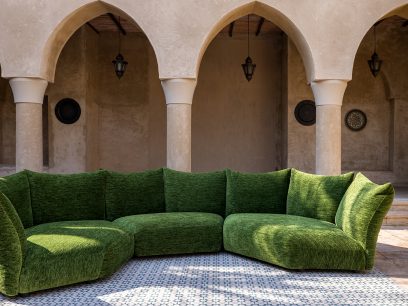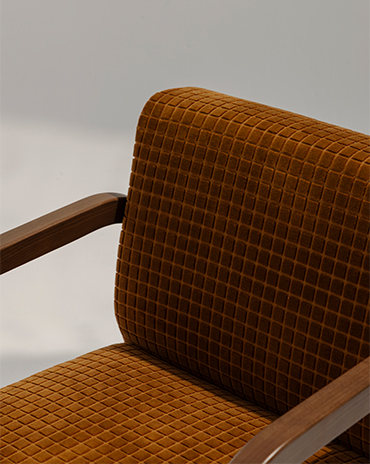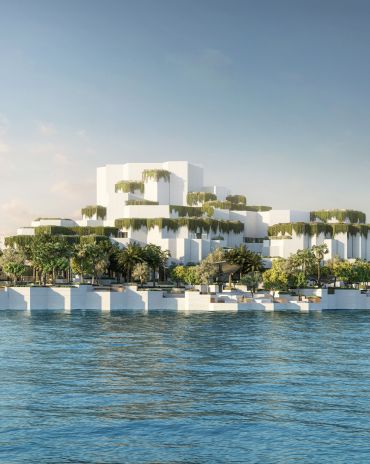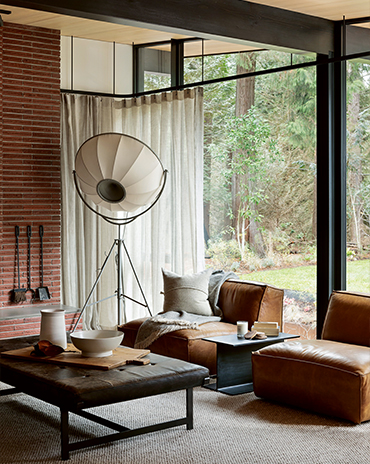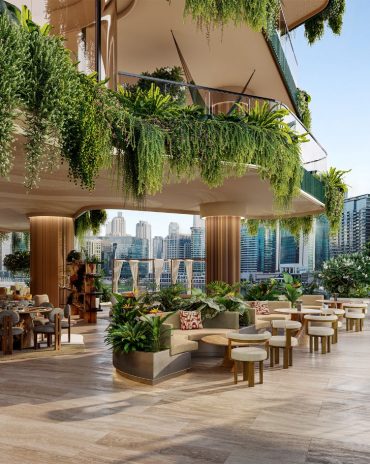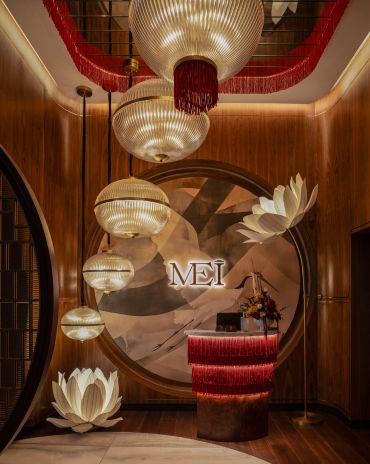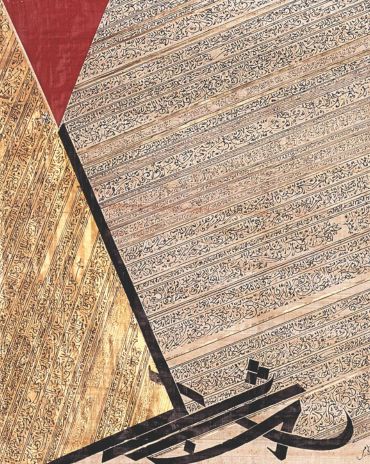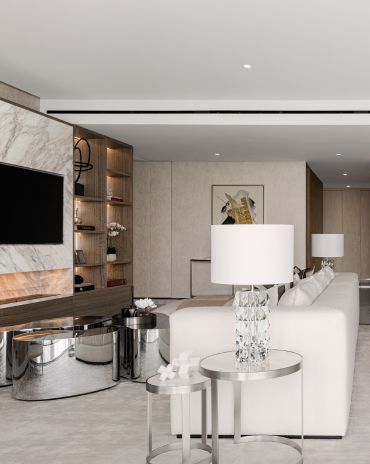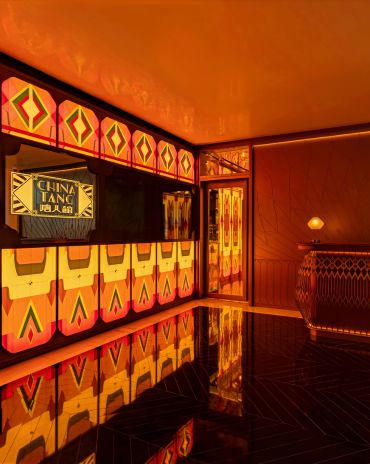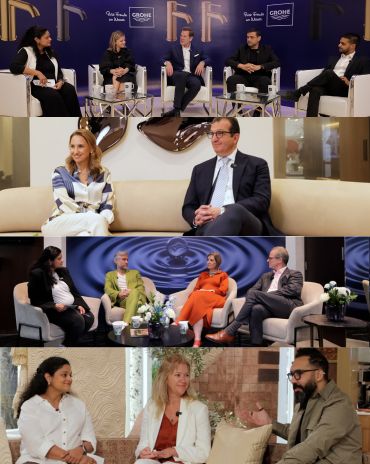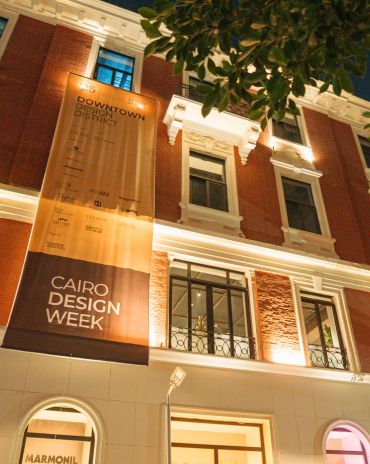Copyright © 2025 Motivate Media Group. All rights reserved.
Changing the status quo with Riyadh Mosque by Almena
Architects have come together to re-imagine the existing Riyadh Mosque in Egypt
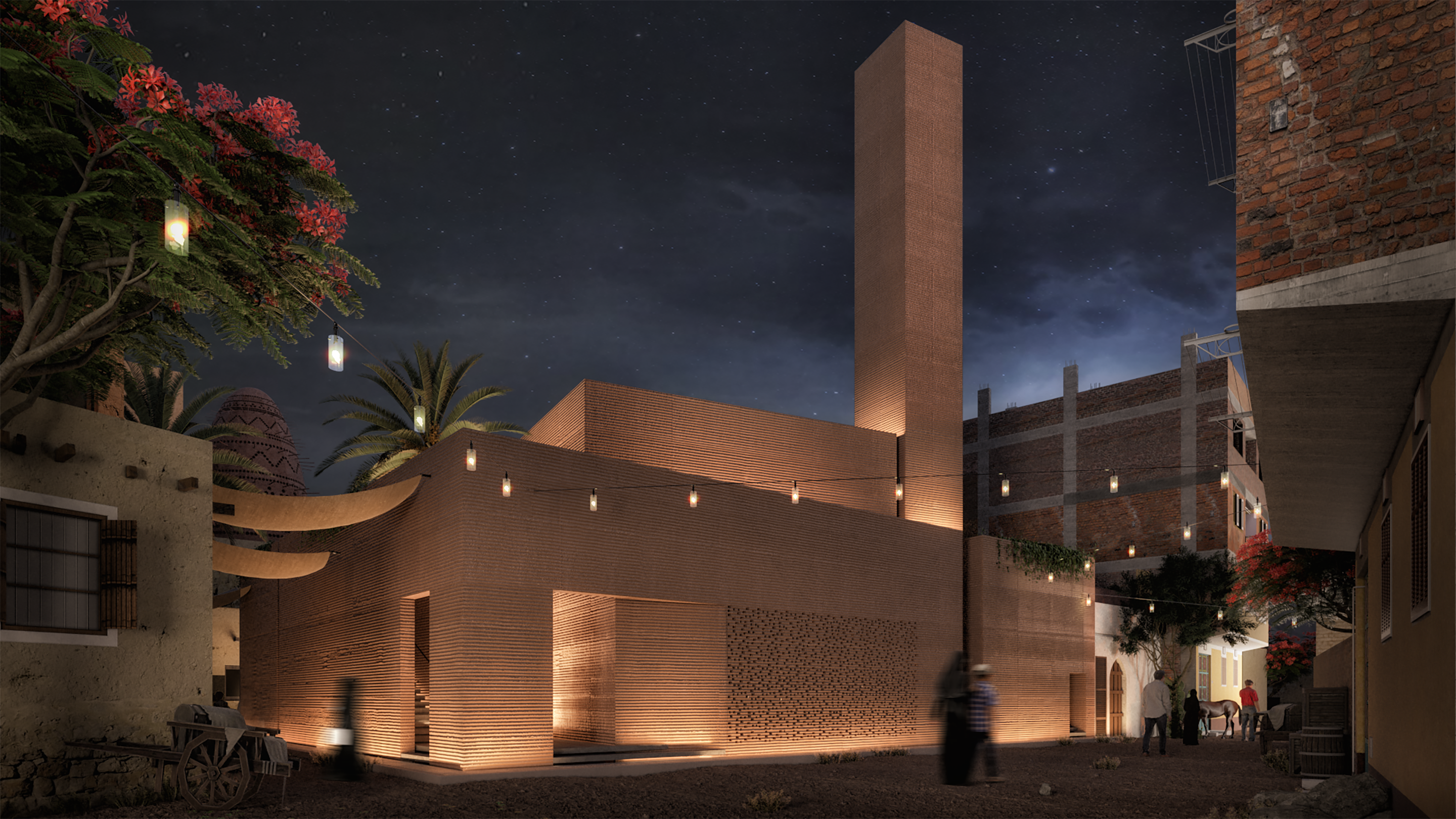
The function of the mosque now has a much more significant role as a building that reframes the spaces within to encourage community use alongside its purpose as a sacred worship space. Situated within the Nile Delta’s dense landscape, the new mosque design was envisioned by Almena, a partnership between Abdelrahman and Abdallah Mekkawi which designs in parallel for the unprivileged communities in Egypt alongside its work with Woods Bagot.
The project was designed as a physical embodiment of simplicity, spirituality, tranquillity and community, with the concept of the mosque intended to reimagine the role of the old mosque in the village. Taking deep inspiration from the early mosque’s typology and the narratives of the village’s community, the mosque reframes its spaces to encourage community use alongside its purpose as a sacred worship space. The mosque is designed to accommodate seasonal increases in worshippers during Fridays and the holy month of Ramadan. The mosque accommodates additional activities besides the main prayer hall, such as a small library and a Kuttab for teaching the Quran.
Almena spoke to us about the specifics of the project and why they took up the initiative in the first place:
Why was this project undergoing reconstruction?
The original mosque was demolished and rebuilt several times and witnessed many additions and extensions over the years. As the village has experienced an increase in population during the past fifty years and difficulty in maintenance, the village community affectionately donated an adjoining plot for the mosque to be expanded and rebuilt.
What drew you to the project?
We were lucky that we didn’t choose to work on the project, but [that] the project chose us. We were invited by the Riyadh village community to reimagine the central mosque in the village, and we were keen on answering the question ‘What is a mosque?’ For a Muslim to pray, all he needs is a clean place and a direction toward the Kaaba. But on the other hand, the mosque has a much more significant role, [as] a place that reframes the spaces to encourage community use alongside its purpose as a sacred worship space.
Why did you start this specific collaboration? How did it come about?
We began with being involved in projects with a social and environmental cause. This experience has made us realise many things about the profession and has reformulated a conscious understanding of design as a vital impact tool on our built environment. In 2021 we moved to Dubai to get exposed to different architectural practices and new experiences, and in 2022 we joined the Woods Bagot team as architects. Through six years of experience in architecture, we have always believed in working on a parallel practice to enrich our community [and] to broaden our perceptions of the practice. We are dedicated to creating architecture that supports and strengthens communities, emphasising harmony within the context and the MENA region’s climate, culture and traditions. Our work is an outcome of a unique synthesis of bridging the historical and contemporary architecture gap. With this approach and expertise, we want to continue our journey and aspire to become well-grounded architects who can drive meaningful change in Egypt.
What are some of the other projects you have worked on?
We collaborated on ‘Jannat Masjid’, winner of the Future Projects category at the World Architecture Festival Awards. Also, we are best known for designing a community school using locally sourced materials in a village in Upper Egypt (2019). We received international attention by publishing the project in the 27th World Congress of Architects UIA, 2020 in Rio. [Also], the Abu Dhabi Flamingo Visitor Center competition (Honourable Prize 2020) [and the] Filter for Peace – Competition (Finalist 2019).
What were some of the key challenges when working on the Riyadh Mosque?
The key challenge was to get the village community involved in the design process with the stakeholders [which we did] through several participatory design workshops to meet their desires and aspirations. These workshops provided a unique forum for participants to exchange their experiences and consider the approaches needed to develop the central mosque. With deep inspiration from the narratives of the village’s community, we created a dialogue with the community about the role of the mosque, which goes beyond the sacred worship space.
Any background on the mosque itself? Why was it named as such, and when it was built?
The Riyadh Village Mosque is in north-east Egypt, near Abu Kabir in the Sharqia Governorate, [and was] built in the early 1920s. For more than a hundred years, the Old Mosque of Riyadh occupied the plot serving the village community. Situated within the Nile Delta’s dense landscape, the new mosque is envisioned to be harmonious with its context.
The design team was invited by the Riyadh village community to reimagine the central societal space and the most vital space in the village, which is the mosque in which the village as a whole gathers once a week on Fridays and five times every day to perform daily prayers, in addition to additional activities besides the main prayer hall, such as a small library and a Kuttab for teaching the Quran.
A straightforward design process started by correcting the direction of the qibla wall, as the old one had a 10-degree difference from the correct inclination. This prescribed the four sides of the main prayer hall. The next step was to add an outer shell aligned with the main streets around the plot, following the urban context. This outer shell wraps the prayer hall creating two Riwaqs in between, one on each side. A series of gateways was introduced to attract people from all directions, for the main idea was to make the mosque work as an anchor for the village.
Following the main entrance to the prayer hall, a transitional space separates the large prayer hall from areas intended for ablution and footwear storage. This space forms a symbolic courtyard or Sahn. A palm tree inside the Sahn leads to the main doors of the prayer hall, where adjacent sitting benches suggest a friendly and tranquil place.
From within the prayer hall, the two Riwaqs are open to the sky on either side. The Riwaqs serve as courtyards that help circulate fresh air and gather daylight and provide worshipers with a different place to read, reflect and gather. The mosque relies on vertical openings in the ceiling, which allow indirect lighting to enter through vertical glass panels that let the fresh northern breeze filter into the mosque [as well as] indirect glare-less sunlight to naturally illuminate the prayer hall.
Finally, the minaret’s location was on the right corner of the qibla wall. This location allows the minaret to form a visual mark that appears from both directions of the main village road; at the same time, this maintains the original village skyline, preserving the memory-of-place of this significant and beloved village spot.
The Latest
A New Standard in Coastal Luxury
La Perla redefines seaside living with hand-crafted interiors and timeless architecture
Things to Covet
Here are some stunning, locally designed products that have caught our eye
An Urban Wadi
Designed by Dutch architects Mecanoo, this new museum’s design echoes natural rock formations
Studio 971 Relaunches Its Sheikh Zayed Showroom
The showroom reopens as a refined, contemporary destination celebrating Italian craftsmanship, innovation, and timeless design.
Making Space
This book reclaims the narrative of women in interior design
How Eywa’s design execution is both challenging and exceptional
Mihir Sanganee, Chief Strategy Officer and Co-Founder at Designsmith shares the journey behind shaping the interior fitout of this regenerative design project
Design Take: MEI by 4SPACE
Where heritage meets modern design.
The Choreographer of Letters
Taking place at the Bassam Freiha Art Foundation until 25 January 2026, this landmark exhibition features Nja Mahdaoui, one of the most influential figures in Arab modern art
A Home Away from Home
This home, designed by Blush International at the Atlantis The Royal Residences, perfectly balances practicality and beauty
Design Take: China Tang Dubai
Heritage aesthetics redefined through scale, texture, and vision.
Dubai Design Week: A Retrospective
The identity team were actively involved in Dubai Design Week and Downtown Design, capturing collaborations and taking part in key dialogues with the industry. Here’s an overview.
Highlights of Cairo Design Week 2025
Art, architecture, and culture shaped up this year's Cairo Design Week.



